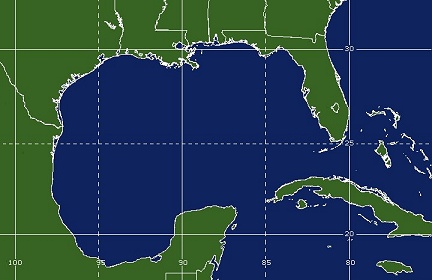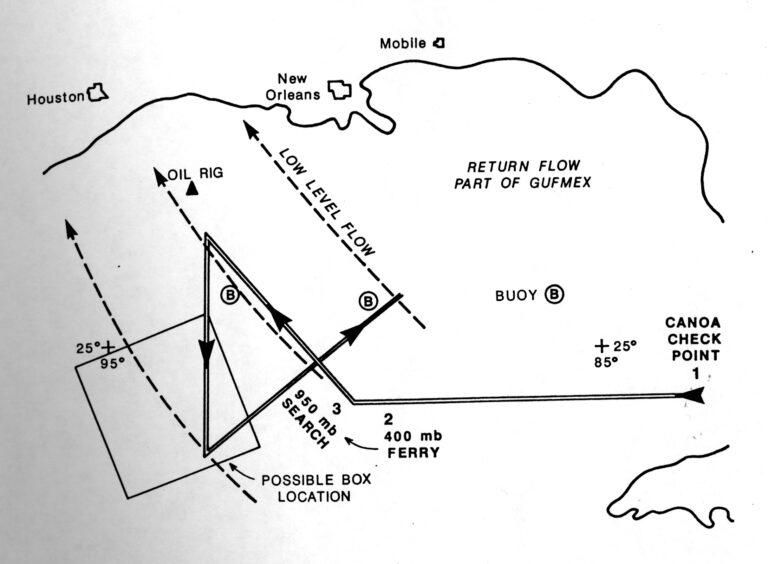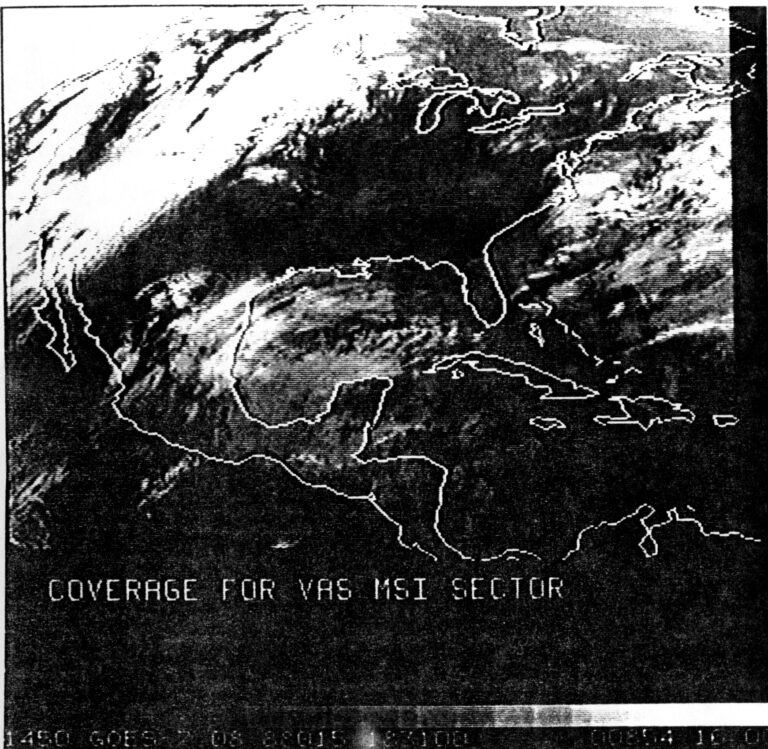GUFMEX: The Gulf of Mexico Experiment (GUFMEX)
The Gulf of Mexico Experiment (GUFMEX) was a joint program involving scientists from CIMSS (Cooperative Institute for Meteorological Satellite Studies, University of Wisconsin-Madison) and the NOAA National Severe Storms Laboratory (NSSL) examining polar air-mass modification over and return flow from the Gulf of Mexico. During the field phase (21 February-2 April 1988) CIMSS scientists gathered satellite data, flew on the NOAA P-3 research aircraft, and began preparations to process these special observations on the CIMSS 4-D Data Assimilation System.
Forecasters were especially interested in GUFMEX. Return flow brings fog and stratus clouds to the Gulf Coast and interferes with aviation. Gulf moisture also is a critical element in spring-time precipitation events over the eastern and central United States, including severe convective storms. Every spring, polar air masses from North America fight a losing battle with continental tropical air from Mexico and maritime tropical air form the Caribbean Sea for control of the Gulf. The relatively warm waters of the Gulf aid in rapidly heating and moistening each intrusion of North American air. “Return flow” is modified polar air in retreat, often accompanied or followed by maritime tropical air. The result is a complicated synoptic meteorology situation, causing great difficulty in forecasting the amount of moisture and/or the time of arrival of low cloud, fog or rain.
The goal of GUFMEX was to understand the processes involved in the modification of polar air outbreaks over the Gulf and their subsequent retreat back over land as return flow. GUFMEX consisted of four overlapping steps: 1) statistical studies of the synoptic meteorology of the Gulf of Mexico using conventional observations, 2) intensive observation and analysis of a few modification and return flow cases during the GUFMEX field phase, 3) adjustment and evaluation of satellite remote sensing techniques based on field phase measurements, and 4) quantitative analysis and diagnosis of modification and advective processes during the GUFMEX field phase. CIMSS scientists were directly involved in all phases but the first. CIMSS research scientist Robert Merrill provided meteorological analyses and input to research flight planning with the field team in Miami, and flew on all five NOAA P-3 flights.
CIMSS View, v.4, no.1, 1988
Investigators
Related Websites
Publications
-
Lewis, J. M.; Hayden, C. M.; Merrill, R. T., and Schneider, J. M. GUFMEX: A study of return flow in the Gulf of Mexico. Bulletin of the American Meteorological Society v.70, no.1, 1989, pp24-29. Reprint #1058.
-
Lewis, John M.; Fredrickson, Sherman E.; Showell, Lester C.; Wade, Gary S., and Doswell, Charles A. Gulf of Mexico Experiment (GUFMEX): A study of return flow in the Gulf of Mexico, 15 February-30 March 1988. Norman, OK, [US Department of Commerce], [National Oceanic and Atmospheric Administration (NOAA)], National Environmental Satellite, Data, and Information Service (NESDIS), National Severe Storms Laboratory, 1988. 39p. C 55.202:988.
-
Merrill, R. and Wade, G. GUFMEX: The Gulf of Mexico Experiment. CIMSS View v.4, no.1, 1988, pp6-7. Reprint #3908.
-
Merrill, Robert T. Synoptic analysis of the GUFMEX return-flow event of 10-12 March 1988. Journal of Applied Meteorology v.31, no.8, 1992, pp849-867. Reprint #1312.
Images
-

Gulf of Mexico, map
NOAA -

Observational platforms planned for use in the field phase of project GUFMEX.
Figure 3 from Gulf of Mexico Experiment (GUFMEX: A study of return flow in the Gulf of Mexico. National Severe Storms Laboratory, Norman, OK, 1988. -

Typical flight plan for the air mass modification phase of project GUFMEX. A budget box is flown after a series of ramps measure the mixed layer properties between 1,000 and 10,000 feet.
Figure 6 from Gulf of Mexico Experiment (GUFMEX: A study of return flow in the Gulf of Mexico. National Severe Storms Laboratory, Norman, OK, 1988. -

The region of North, Central, and South America and adjoining oceans covered by the dwell sounding mode of VAS.
Figure 9 from Gulf of Mexico Experiment (GUFMEX: A study of return flow in the Gulf of Mexico. National Severe Storms Laboratory, Norman, OK, 1988.
